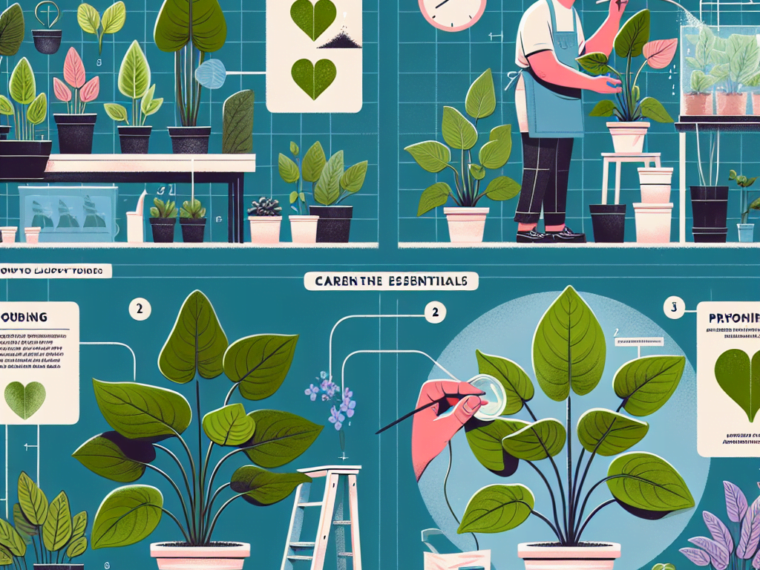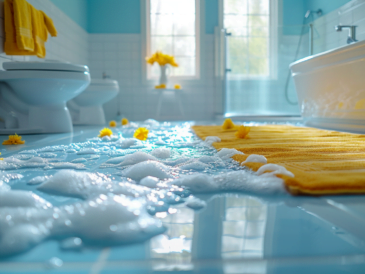Philodendrons boast a rich diversity, with each variety bringing its distinct shape, size, and color to the world of plants. From the climbing vines of the Heartleaf philodendron to the large and striking leaves of the Monstera – often misclassified as a philodendron – this genus has a plant for every taste and space. What’s more, new hybrids and cultivars regularly emerge, adding even more choices for enthusiasts. Exploring these various types provides an absorbing pastime for many indoor gardeners.
Reasons for Philodendron Popularity
Why do people love philodendrons so much? Well, for starters, they are incredibly easy to care for, thriving in a variety of home environments. Plus, their ability to purify the air is a big plus, making them both beautiful and functional. Their adaptability allows them to grow either in hanging pots or as climbing plants with the support of a trellis or pole, catering to different aesthetic tastes and practical considerations.
Benefits of Growing Philodendrons Indoors
Inviting philodendrons into your home isn’t just about their visual appeal. These plants work tirelessly to filter toxins from the air, contributing to a healthier living environment. They can even help raise the humidity levels in drier homes, which is beneficial for both human inhabitants and other indoor plants. Plus, their low-maintenance nature means they’re perfect for those with busy lifestyles or for folks who haven’t quite nailed down that green thumb yet.
Philodendrons are fascinating plants that offer a rich diversity of shapes, sizes, and growth patterns. Their structure is characterized by sturdy stems, large leaves, and roots that can either cling to support structures or spread out if the plant is a self-standing variety.
Anatomy of Philodendron Plants
These plants display a unique anatomy; they typically have large, often glossy leaves that add a lush green presence to any environment. The leaves grow on long, smooth stems which may trail or climb, depending on the species. Philodendron roots, particularly in climbing varieties, are designed to anchor onto nearby supports, giving these plants their characteristic vertical growth habit.
Different Growth Habits: Climbing vs. Non-Climbing
Philodendrons generally fall into one of two categories: climbers or non-climbers. Climbing philodendrons use aerial roots to ascend up trees or trellises, while non-climbers tend to form dense clumps and may even resemble shrubs in appearance. Both types adapt well to indoor conditions, making them popular choices for houseplant enthusiasts.
Native Habitats and Climate Preferences
The natural habitats of philodendrons are typically tropical, enjoying the warm and humid climates of the rainforests. They thrive under the canopy of larger trees, where dappled sunlight filters through. In cultivation, these plants prefer environments that mimic their native settings—bright, indirect light, consistent warmth, and higher humidity levels.
Selecting the Right Philodendron
Embarking on your journey with philodendrons starts with picking out the perfect plant. These tropical beauties come in numerous species, and choosing one aligns with your lifestyle and interest. If you’re new to this, opt for varieties known for their resilience and low maintenance, like the Heartleaf or Selloum philodendron. Each type offers unique leaf shapes and growth patterns, so consider the space where you’ll place your green companion, ensuring it suits their light and size needs.
Sourcing Quality Plants
Once you’ve settled on the kind of philodendron you’d like, the next step is finding a healthy specimen. Reach out to trusted nurseries or garden stores with good reputations. Remember, a quality plant should have vibrant leaves free from spots, pests, or yellowing—signs of good health. Also, don’t shy away from asking store staff for care tips and background info on their plants; they’re usually eager to share their knowledge!
Initial Potting and Soil Requirements
Your philodendron’s first home will play a significant role in its growth. Start with a pot that’s not too big; overpotting can lead to waterlogging and root rot. The ideal container should allow room for growth but not so much that the soil stays wet for too long. As for the soil, philodendrons crave well-draining mixes. Choose or make a blend that’s peaty, airy, and capable of holding moisture without becoming waterlogged. Lastly, make sure your pot has drainage holes—absolutely essential for preventing excess water retention.
Cultivating healthy philodendrons involves creating the perfect environment that mimics their natural habitat. What’s needed is a balance between light, temperature, humidity, water, and nutrients. Let’s dig deeper to help these easy-to-care-for houseplants thrive.
Light Requirements for Healthy Growth
Thriving philodendrons need just the right amount of light—not too bright, and definitely not too dim. Aim for a spot that gets indirect sunlight; direct beams can scorch their leaves while poor lighting stunts growth. Place it near a window with a sheer curtain for the best effect.
Temperature and Humidity Preferences
Philodendrons are a bit picky when it comes to temperature and moisture in the air. They fancy a warm spot that stays between 65-78°F (18-25°C). As tropical plants, they love humidity—think about aiming around 60-80%. But hey, they’re adaptable, so typical home humidity levels usually do the trick.
Watering Techniques and Frequency
Here’s where things get a bit tricky – watering these beauties can be more art than science. Overdo it, and roots might rot; too little, and leaves wilt. The trick is to let the top inch of soil dry out before going in with your watering can again. Tip: Use lukewarm water to avoid shocking your green friend.
Fertilizing Philodendrons for Nutrient Supply
Feeding your philodendron doesn’t have to be complicated. Give ’em a balanced liquid fertilizer once in spring and again in summer – that should do the job. Just remember, less is often more here; over-fertilization can harm these sensitive plants.
Choosing the Right Pot Size and Material
When it comes to philodendrons, getting the right pot is a big deal. You need something that’s just the right size; too small, and the roots won’t have enough room to grow, but too big could lead to water not draining well. That kinda mess can cause root rot, which is bad news for your plant. Now, think about material, as well. Ceramic pots look great and they’re heavy, so they won’t tip over easily. Plastic ones are lighter and cheaper but can look a bit less fancy. Both work well, though, so pick what suits you and your home best.
Understanding When to Repot
Keeping an eye on your philodendron is key to know when it’s time for a change of scenery—or pot, I mean. When you spot roots growing out of the drainage hole, or when the plant seems to be choking itself out inside the pot, it’s probably shouting for some more space. Typically, this happens every couple of years. Just be careful not to jump the gun; repotting too often can stress out your leafy buddy more than helping it.
Step-by-Step Guide to Repotting
Alright, let’s get down to business—repotting doesn’t have to be a headache. First things first, water your plant a day before you plan to repot; it makes the whole thing less of a shock for it. When you’re ready, gently coax the plant out of its current home; if it’s stubborn, turn the pot upside down and give it a light tap or two. Grab a new pot that’s just a couple inches bigger in diameter than the old one and chuck some fresh potting mix in there. Plop your philodendron in the center and make sure it’s sitting at the same depth it was before—no deeper or shallower. Fill ‘er up with more soil around the sides, give it a good pat down (not too hard!) to get rid of air pockets, and finish with a nice watering. Bam! You’ve officially repotted your plant pal.
Philodendrons, known for their lush foliage and hardy nature, can be propagated using a variety of methods. These approaches allow plant enthusiasts to create new plants from an established one, embracing the cycle of growth and regeneration that gardening advocates.
A. Propagating Philodendrons Through Stem Cuttings
Taking stem cuttings is a popular method to propagate philodendrons. This involves cutting a piece of the stem that includes at least one node, which is where new roots emerge. It’s essential to use sterilized tools to prevent the spread of disease and ensure a clean cut. After snipping the desired section, you can move on to rooting the cutting, which can be done in water or soil.
B. Rooting Philodendron Cuttings in Water vs. Soil
Both water and soil provide effective media for rooting philodendron cuttings, though each has its own pros and cons. Water rooting allows you to watch the roots develop, which is not just fascinating but also offers reassurance that the process is proceeding correctly before transplanting. However, soil propagation may lead to stronger initial root development because it mimics the natural growing environment. Whichever method yuo choose, be patient—roots take time to form.
C. Layering and Division Techniques
Besides cuttings, layering and division are alternative propagation strategies for philodendrons. Layering involves bending a part of the plant down into a pot of soil without severing it from the parent until roots have formed. Meanwhile, division is ideal for mature plants, separating them into smaller segments with both roots and leaves during repotting. Each segment then has the potential to grow into a new, independent plant when given proper care.
Maintaining the health of philodendrons isn’t too tricky, but even these resilient plants can encounter some trouble. Stay sharp for common pests and diseases that may come to call; catching them early is key to keeping your green buddy in top shape.
Identifying and Treating Pest Infestations
You’ve gotta keep an eye peeled for unwanted critters like aphids, spider mites, or mealybugs — trust me, they love to crash on houseplants uninvited. To do this, be on the lookout for any unusual spots or webbing on leaves, or pesky bugs hanging around. If you spot ’em, don’t panic! A gentle soap and water mix can show these invaders the door. For tougher cases, introducing beneficial insects or using horticultural oils might do the trick.
Recognizing Signs of Disease
When it comes to spotting sickness in your plant pal, watch out for yellowing leaves or spots that scream “I’m not feeling hot!” Such symptoms may be a heads-up about root rot or fungal issues caused by too much moisture. On the flip side, brown leaf tips can signal that your plant’s thirst isn’t getting quenched enough.
Preventive Care and Maintenance
Keepin’ your philodendron happy and healthy boils down to a bit of TLC. Make sure you’re giving it the right light levels, watering it properly — not too much though! — and giving it the occasional fertilizer feed. Regular check-ups can help you nip potential problems in the bud before they blow up into bigger issues.
When and How to Prune Philodendrons
Knowing the proper time to prune your philodendron is key to ensuring its healthy growth. Ideally, you’d want to do this during the spring or fall, when the plant isn’t in its active growing phase. The process is simple: grab a pair of sharp scissors or pruning shears and snip just above a leaf node – that’s where new growth will sprout. It’s important not to overdo it; only remove what’s necessary. If you’re unsure, remember the old saying: less is more.
Shaping Philodendrons for Aesthetic Appeal
Philodendrons can be groomed not just for health, but also to enhance their look. Want your plant to seem fuller? Trim it strategically. For a shapely philodendron, carefully choose which branches to cut back. The goal is to encourage growth in areas that appear sparse, giving your plant a balanced and attractive form. This kind of attention to detail can turn an ordinary houseplant into a living masterpiece. But take care—pruning should always be done with a gentle hand.
Removing Damaged or Diseased Foliage
Maintaining the wellbeing of your philodendron means keeping an eye out for any leaves that are yellowed, browned, or otherwise looking worse for wear. These may be signs of damage or disease, and they could potentially harm the entire plant if left unattended. When you spot these unhealthy leaves, cut them off promptly. Doing so will redirect your plant’s energy towards fostering robust new growth, which is something every plant parent loves to see. A stitch in time saves nine, after all – dealing with issues early on can prevent bigger problems down the road.
Beloved for their varied foliage and adaptability, philodendrons bring a splash of the tropics into your living space. These hearty plants come in vine and non-vine varieties, offering options for everyone from novice plant parents to more seasoned green thumbs. With proper care, they can flourish, transforming any corner into a lush retreat.
Special Considerations
When bringing any new plant into your home, considering its impact on pets is crucial. Philodendrons produce calcium oxalate crystals, which can be harmful if ingested. If you have curious pets prone to chewing on greenery, these plants should be placed out of reach, ensuring both your furry friends and verdant buddies stay safe.
Displaying Philodendrons in Interior Design
Philodendrons are versatile in the interior design realm. Their sprawling leaves add texture and a feeling of serenity to any room. Whether you’re aiming for a minimalist vibe or a bohemian flair, they fit seamlessly. Hanging planters or high shelves can showcase their trailing vines, while larger, self-supporting types make statement pieces in floor pots.
Troubleshooting Common Growing Issues
Owning plants isn’t always smooth sailing – sometimes, you’ll face growing pains. Yellow leaves often signal that your philodendron is getting too much direct sunlight or water. On the flip side, slow growth or small leaves might mean it’s time to bump up lighting or feeding.
Don’t fret; with a bit of tweaking, your philodendron can bounce back. A well-draining soil mix and consistent watering schedule lay the foundation for robust, vibrant growth.
Philodendrons are a diverse group of plants that have become staples in indoor gardens around the globe. Their broad, green leaves and adaptability to low-light conditions make them favorites among new and seasoned plant enthusiasts alike. They come in various shapes and sizes, from climbing vines to stout, bushy specimens, making them versatile for different interior designs.
Advanced Care Techniques
Giving your philodendrons just a bit more attention can go a long way. Advanced care techniques can boost their growth, encourage vibrant foliage, and even help you venture into cultivating more exotic varieties.
Enhancing Growth with Grow Lights
If you’d like to see your philodendron thrive, consider using grow lights. These artificial light sources can mimic the spectrum of sunlight, promoting photosynthesis and supporting robust growth, especially in spaces where natural light is limited. It’s a nifty trick to keep your green buddies growing strong, even through darker months or in less-sunny homes.
Hydroponic Systems for Philodendrons
Hydroponics is a soil-free gardening technique that feeds your plants through mineral nutrient solutions in water. Philodendrons can do exceptionally well in these systems since they receive all the necessary nutrients directly to their roots. This method also prevents some common dirt-related troubles like pests and diseases.
Experimenting with Variegation and Rare Species
To stand out in the plant community, getting your hands on variegated philodendrons or rare species might be the ticket. Variegation refers to the appearance of different colored zones in the leaves, which occurs due to genetic mutations, giving the foliage a unique, striking look. Cultivating these rarities can be a rewarding challenge and make your collection truly one-of-a-kind.


